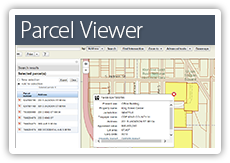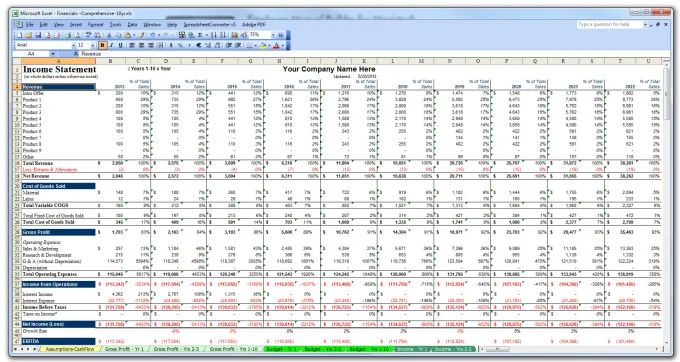
One of the frequently asked questions we receive at GIS is how we collaborate with property owners (sometimes referred to as principal sponsors or sponsors) on new developments. There are various possible structures for such partnerships. Before a deal structure is even discussed, we need to study the project and believe that it makes sense.
If the project makes sense, we will talk about structures. A common one is to form a new joint venture entity, usually an LLC, and transfer the property to the entity at its appraised value, representing the original owner’s equity stake in the joint venture. GIS usually invests a proportion of its profits into the venture, which are calculated as a percentage of the development fee and the general contractor’s fee. As the fee is earned, our equity share grows; however, on day one, the principal sponsor is a 100% owner.
Here are the basic steps to develop a real estate project that we typically go through. Each one of these is probably worthy of its own book, but we will start with this summary.

- First meeting and site walk.
Some people analyze real estate without ever stepping foot on a jobsite. We are not them. We have to walk the site, look at the parcel viewer, and review the high-level property statistics and the site’s history. As a first step in every development, we typically prepare a conceptual proforma free of charge as a good-faith gesture and a high-level test of the project’s potential. Many jobs are killed at this stage. - Feasibility study.
When a conceptual agreement is reached, we execute a Letter of Intent, which describes the framework of future collaboration. At this stage we are not yet partners. A group of consultants is engaged to study the site, zoning, and market conditions. During the study, we typically hire a surveyor, an architect, and other initial consultants if needed. For larger projects, it may be beneficial to meet with the local municipality to discuss the proposed plan. To finalize the cost and revenue projections, we usually involve a property management company with experience in marketing, sales, and leasing. They help us project future revenues from the completed building. For a for-sale product, we solicit input from real estate brokers. Based on the input from the consultants, we prepare a more detailed project proforma, which is still an early-stage analysis, but it provides a good indication of the project’s potential success. Oftentimes, a pre-application conference with the municipality is a prudent step to get early feedback from local officials about the proposed development.
This step requires some upfront investment. To engage us, we typically require a nominal initial deposit to cover the direct cost of this effort. The final report is a great asset to have if we do not proceed towards a future partnership. - Finance early-stage development work.
To finance future development, the first step is to leverage the land itself. The sponsor can pay out of pocket of course, but we usually advise to use other people’s money whenever possible. The easiest way to do that is by obtaining a bridge loan for about 50% of the land’s valuation. This cash enables us to fund development activities, such as payments to architects, engineers, and surveyors, and to cover the basic development overhead costs.
We would actively work with our lending network to procure development bridge financing. This is the stage at which the deal structure would get negotiated. The property owner’s share of the development would be represented by the net value of the property they bring into the deal. Our share would be calculated based on the proportion of the fee we contribute to the project. We usually share a General Partner (GP) portion of the capital stack. - Schematic Design, Design Development.
Engage an architect, a group of design consultants, and a general contractor.
It is critically important to assemble a group of experienced professionals. While many less experienced developers focus on architecture, it is equally important to engage engineers and a general contractor, who would be estimating costs with every iteration of the design. The development lead must update the project proforma with each iteration as well to ensure the project is progressing on track. Changes in market conditions must be taken into account.
Our company usually manages the development cycle, preconstruction efforts where future project costs are meticulously estimated, and ultimately, the construction itself. - Raise equity for construction.
A key expense during the development phase is establishing the platform to attract investors to the project. It typically takes 12 to 18 months to design and permit a commercial building (6 to 9 months for single-family residential), which is the same timeframe we need to create and market the framework that will allow external investors to join the partnership. External investors may include independent high-net-worth individuals, family offices, and institutional equity investors.
These groups are usually invited as limited partners, meaning they have no voting rights, they receive a preferred return on their investment, and they share in the upside based on a waterfall structure.
This is the stage at which the final deal structure is determined. - Secure senior debt. Construction Documents.
When equity is identified or secured, we engage our partners to procure senior debt for the project. We have worked with several different types of lenders, such as commercial banks, debt funds, and private lenders (also known as hard money lenders). There are pros and cons of working with different type of lending institutions. Usually, private money is more expensive but could be closed on a much faster timetable. Commercial banks or insurance companies are much less expensive, but many regulated entities have lengthy due diligence, approval, and paperwork processes.
We carefully craft the pitch and compile the documents into a custom-designed digital data room for senior lenders. After approaching a short list of familiar lenders, we may involve a broker or investment banker to expand the search. - Construction management.
Steps 4, 5, and 6 typically overlap. The goal is to obtain construction financing at the same time when permits are approved. At that point, our construction team typically takes over the day to day site operations. Our Development arm maintain control of the budget, construction administration, changes in costs and schedules.
Toward the end of construction, a property management company or real esate brokerage team steps in to prepare the project for sale or lease-up in accordance with the marketing plan developed in step four. Presales typically begin one year prior to completion. Pre-leases begin three months prior to occupancy. - Sales/Leases/Operations
This stage is self explanatory. Oftentimes, it overlaps with construction completion, and occupancy is expected prior to contractors fully demobilizing.
I really glossed over the last two steps but frankly there are plenty of books written about that. This post is not the place to discuss how to perform construction management or real estate marketing.
I hope this manual was useful. Feel free to drop me a line with any questions. As always, sign up to be notified of our next project. And if you have a property you would like to have developed, I would be happy to take a look at it and offer my opinion.